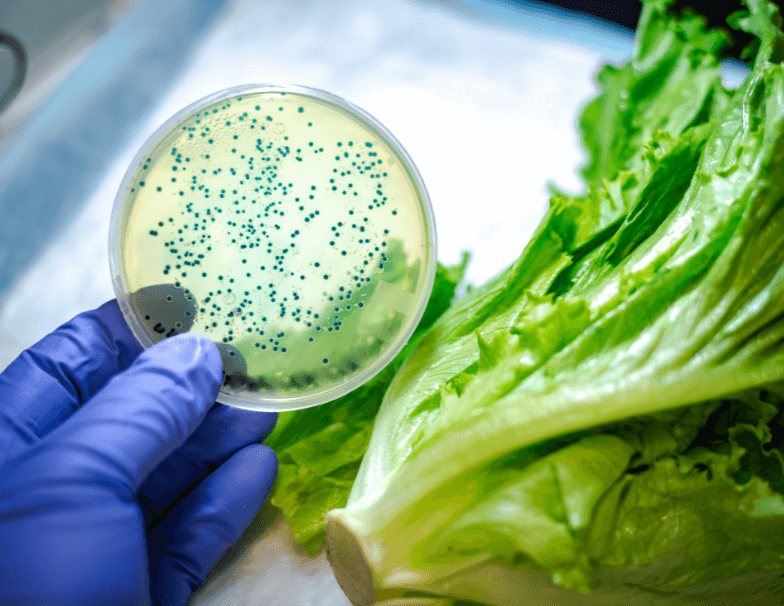Detection, identification and analysis of contamination are crucial steps in resolving suspected physical contaminants in products and processes.
Physical contamination can create a very sensitive situation that could threaten product safety, affect product performance, human health and damage brand reputation.
For this reason, detecting contaminants in materials by inspecting the sample and site, identifying them, finding their sources and resolving the problem is critical. In this article we explain what physical contaminants are, their types and how to detect them.
What are physical contaminants of materials?
The presence of unwanted materials, such as dust and particles, during the time of manufacture and transport is what we call contamination.
The term “contaminants” includes any unwanted matter found in the product. In other words, physical contamination is the introduction of unwanted materials into a product or material from a variety of sources, including the environment.
These physical contaminants not only affect the quality of the product or process, but can also be a serious risk to human health if, for example, foodstuffs or products from the pharmaceutical industry are involved.
Their detection is therefore essential, as in the case of the analysis of metal contaminants due to their potential toxicity to humans.
Types of physical contamination
Contamination is unpredictable and can come from unexpected sources. It manifests itself in a variety of forms: particles, fibres, impurities, gels, discolouration, cloudy or opaque matter, stains, metal fragments, trace chemicals, degradation products, surface residues, reaction by-products and catalyst residues, among others.
Similarly, physical contamination is not the isolated case of a specific sector, but appears in samples from industries of all kinds, such as chemical, electronics, cosmetics, food packaging, pharmaceuticals, metallurgy, etc.
Contaminants can be classified as follows:
- Physical contamination: fibre material, particles or shavings from e.g. pill press tooling.
- Chemical contamination: vapour, gases, moisture, molecules, etc.
- Biological contamination: fungi, bacteria, viruses, animal (hair) or plant (cotton) fibres, among others.
On the other hand, the main sources of contaminants are inadvertent materials from the field and the place of extraction of raw materials – stones, metal, insects, etc. -, materials found or used in the processing and handling phases – plastic, glass, bone, paint chips or rust -, and contamination between batches, which causes products to lose quality and production failures. Quality control of industrial lubricants is therefore necessary, as well as quality control of thermoplastic components, in addition to other analyses to detect physical contaminants.
Physical contaminants can pose a serious threat to product quality and consumer safety.
However, the most common type of physical contamination by foreign materials is metal. This is mainly due to the gradual increase in production technology and automated processes in industry, where machines perform the tasks. In this respect, there are increased opportunities for metal to come into contact with the product at some point in the supply chain, as machines can break or splinter.
How does physical contamination of materials occur?
Physical contamination by foreign material occurs when an object unintentionally enters into a product before or during the manufacturing process. In other words, it occurs when there is cross-contamination. For example, when there is a leak in the storage container and it ends up contaminating the product inside.
Fragments can come from a number of possible scenarios, such as metal trapped in raw materials, tinplate from a can, stainless steel from a factory pump or scraped surface heat exchanger, steel wool cleaning pads or chrome or nickel plating. Other types of contaminants come from human equipment, such as hair or fibres from clothing.
Physical contaminants of glass can also be found, for example, glass sampling equipment in the quality control and testing laboratory. As well as breakages on the production line, particularly on the packaging machine, which are a potential hazard when food products are packaged in glass.
Similarly, plastics have a wide range of uses in packaging, machinery and instrumentation, and many domestic applications. This means that plastics are among the most common physical contaminants.
Detection of physical contaminants and remediation
A range of analytical techniques are used to identify physical contaminants. The most common are metal detection and X-ray inspection, as the precise identification of the metal composition, by means of X-ray microanalysis, is often an essential factor in the correct identification of the source of the problem.
However, other detection and analysis techniques such as optical microscopy, scanning electron microscopy, mass spectroscopy, computed microtomography, gas and liquid chromatography and many other innovative methods are also used. Like the ones we use at Infinitia to detect defects in polyamide components or to validate sustainable and corrosion-resistant coatings, thus avoiding physical contamination.
Our contamination testing experts provide a strategic response to solve any problems with your products. Contact our Forensic Engineering team to provide you with the best solution.





